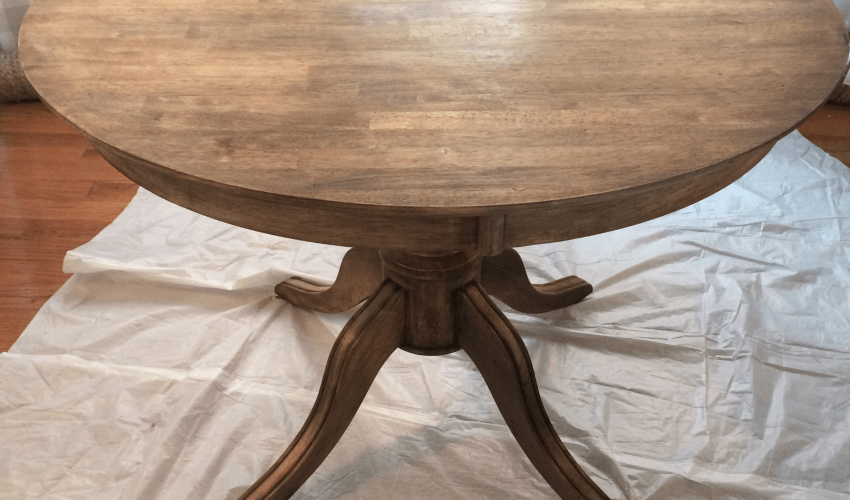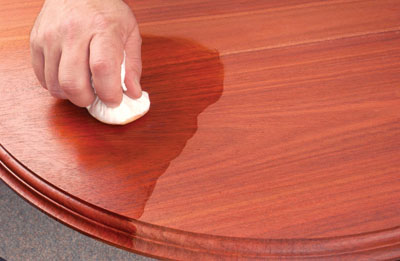Wood Refinishing
Do you have a beautiful table that has seen better days? Is there a great yard sale find that needs refinishing? Refinishing a table is surprisingly easy and can save you a bundle of money.
Finding a Good Candidate for Refinishing
If you have a table that you are considering refinishing, you’ll need to look at a few things to make sure that refinishing it will be worth the time and effort. 1. Is it wood? This may seem like a silly question, but lots of inexpensive tables are made out of wood veneer with a MDF subsurface, or laminate. Pressboard laminate cannot be refinished at all, and wood veneer should only be refinished if it is in very good condition because the wood surface is only a very thin layer. Making sure a table is wood is not difficult, but it does require a careful eye. – Lift it. Real wood tends to be much heavier than veneer or laminate. – Check for cracking, seperating, or peeling edges. This is a sure giveaway that it’s laminate or veneer. – Check the joins. Staples instead of nails or screws are a laminate giveaway. Dovetail joints are a pretty good indicator that it’s wood, and high quality wood at that. – Look at the patterns. Laminate has wood grain printed on the surface, but the grain lacks depth. If you look at the bottom of the table, do you see wood grain? 2. Is it in good condition? Once you know the table is real wood, you’ll want to check its condition. Shallow scratches and small dings are fine. Deeper scratches and larger dings must be evaluated. If it is too deep to sand out, it will show in the finished piece. If you have a few dings in an otherwise excellent table, you can fill them with wood putty. Keep in mind that if they are too large or in a highly grained area, they make look strange.
Finishing Your Table
Once you’ve chosen your table to refinish, you’ll need to prepare it for finishing. Tools you’ll need: – Electric sander (strongly recommended). This will save you time and effort. A small palm sander works fine. – Sandpaper, in rough, medium, and fine grits. You’ll need both sandpaper that fits your sander, and pieces for hand sanding – Paste stripper (optional) – Putty knife, disposable paintrbrush, gloves, and eyemask (if using stripper) – Steel wool, fine – Wood stain – Paintbrush designed for staining – Polyurethane.
1. Use an electric sander and hand sanding with a rough-grit sandpaper to remove all traces of old paint or finish from the table. Be especially careful on curves and crevices — anything you miss in this step will greatly affect the appearance of your final finish. Stubborn areas can be cleared with steel wool, working in the direction of the grain. Alternatively, you can use a paste stripper to remove the old finish. Stripper is corrosive and the fumes can be dangerous, but it may be necessary if you have intricate detail on the surface or legs. Make sure you wear gloves and an eye mask, and place the table in a well-venilated area if you go this route.
2. Fill in any dings or cracks with wood putty, if necessary. Follow the directions on the wood putty and let it dry completely before proceeding.
3. Go over the entire table with a medium grit sandpaper to smooth out the surfaces. When you are done with this step, all traces of any former damage should be gone.
4. Wipe down the table with soapy water. Wait 24 hours before proceeding to allow the table to completely dry.
5. Using a paintbrush, apply a thin coat of wood stain and allow it to dry. You’ll need 2-3 coats. Allow the finished table to dry for 48 hours.
6. Apply 2-3 coats of polyurethane using your paintbrush. Between each coat, lightly sand with fine-grit sandpaper or steel wool to remove any visible brush marks. Your table will be ready to use once it has completely dried and is no longer sticky to the touch. Enjoy the many years of life your new table will give you.








